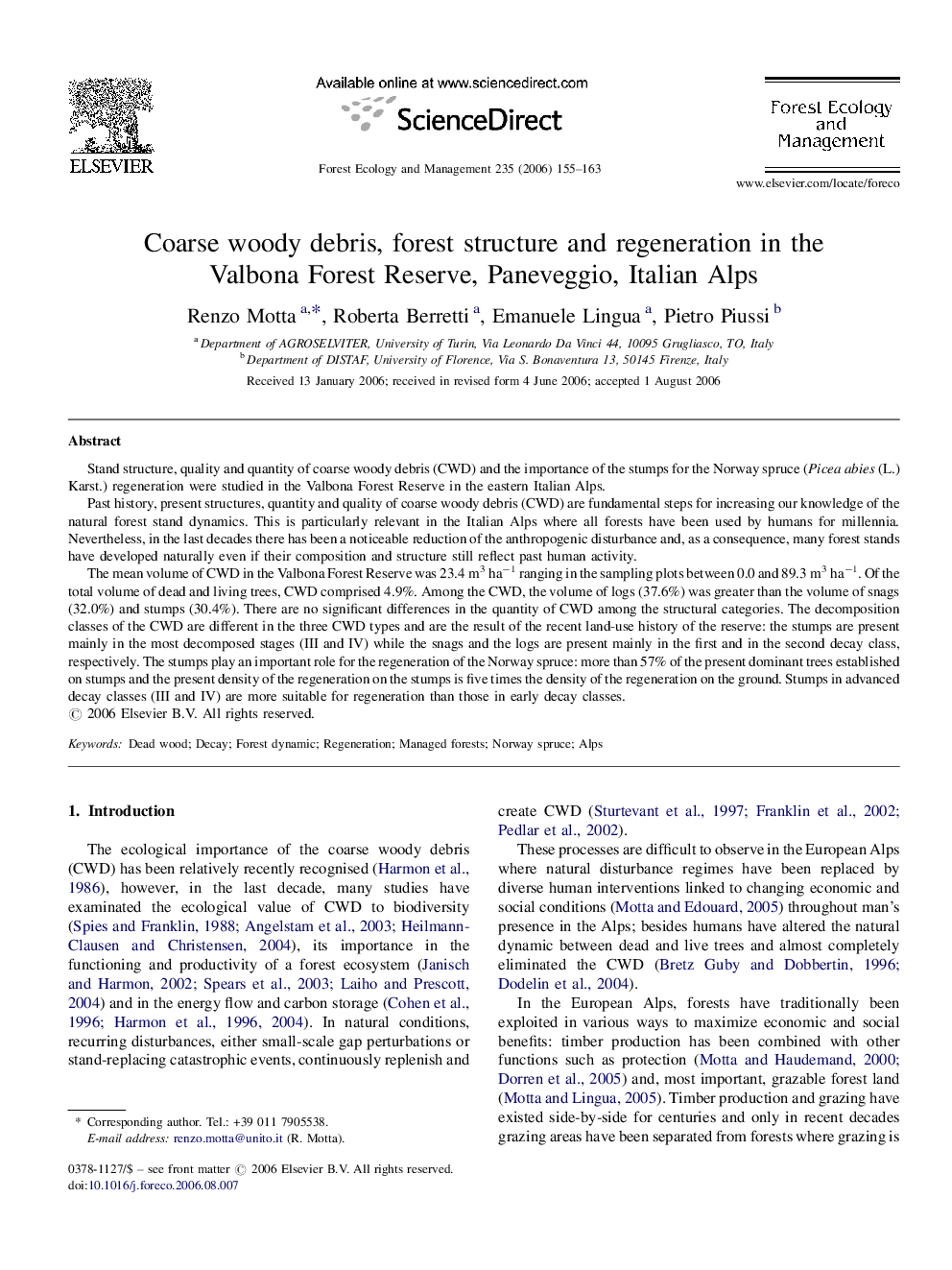| کد مقاله | کد نشریه | سال انتشار | مقاله انگلیسی | نسخه تمام متن |
|---|---|---|---|---|
| 90133 | 159367 | 2006 | 9 صفحه PDF | دانلود رایگان |

Stand structure, quality and quantity of coarse woody debris (CWD) and the importance of the stumps for the Norway spruce (Picea abies (L.) Karst.) regeneration were studied in the Valbona Forest Reserve in the eastern Italian Alps.Past history, present structures, quantity and quality of coarse woody debris (CWD) are fundamental steps for increasing our knowledge of the natural forest stand dynamics. This is particularly relevant in the Italian Alps where all forests have been used by humans for millennia. Nevertheless, in the last decades there has been a noticeable reduction of the anthropogenic disturbance and, as a consequence, many forest stands have developed naturally even if their composition and structure still reflect past human activity.The mean volume of CWD in the Valbona Forest Reserve was 23.4 m3 ha−1 ranging in the sampling plots between 0.0 and 89.3 m3 ha−1. Of the total volume of dead and living trees, CWD comprised 4.9%. Among the CWD, the volume of logs (37.6%) was greater than the volume of snags (32.0%) and stumps (30.4%). There are no significant differences in the quantity of CWD among the structural categories. The decomposition classes of the CWD are different in the three CWD types and are the result of the recent land-use history of the reserve: the stumps are present mainly in the most decomposed stages (III and IV) while the snags and the logs are present mainly in the first and in the second decay class, respectively. The stumps play an important role for the regeneration of the Norway spruce: more than 57% of the present dominant trees established on stumps and the present density of the regeneration on the stumps is five times the density of the regeneration on the ground. Stumps in advanced decay classes (III and IV) are more suitable for regeneration than those in early decay classes.
Journal: Forest Ecology and Management - Volume 235, Issues 1–3, 1 November 2006, Pages 155–163